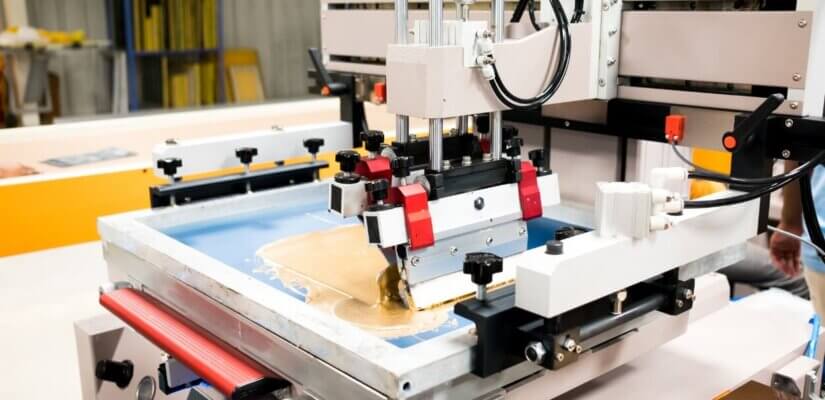
The Importance of Pretreatment on Digital Print Quality
Ever wondered how digital prints look so amazing? It’s a blend of science and creativity that goes beyond the surface. From traditional printing methods to modern digital techniques, achieving those vivid colors involves a mix of chemistry, artistry, and careful choices. Let’s dive into the world of printing thickeners like sodium alginate, clever additives, and the way chemistry and art work together. Join us on this journey as we uncover the science behind making digital prints pop with quality, turning every pixel into a masterpiece of its own.
In the world of traditional rotary and flatbed screen printing, achieving impeccable results requires meticulous attention to detail. The right viscosity of print paste, the choice of suitable thickeners, and careful manipulation of chemical reactions are all critical factors that contribute to the final outcome. In this article, we delve into the complexities of print paste composition and application, highlighting the significance of anionic thickeners, such as sodium alginate and guar gum, in the pursuit of color brilliance and design clarity.
The Role of Thickeners in Printing
Thickeners are the unsung heroes of the printing process, working silently to preserve the sharpness of design edges and outlines. By counteracting the substrate’s natural wicking effect, thickeners ensure that the print stays true to its intended form. Moreover, these compounds hold moisture, aiding the dissolution of dyes and chemicals that permeate the fibers during the steaming phase post-printing. This step is crucial for the completion of chemical reactions with the cellulose polymer. However, the choice of thickeners is not arbitrary; they must not react with dyes or other chemicals, as this could compromise the depth and wash-fastness of colors. Anionic thickeners, particularly sodium alginate, are preferred due to their biodegradability and compatibility with reactive dyes.
The Natural Chemistry of Thickeners
Natural-based thickeners, which are primarily polysaccharides, possess a high affinity for moisture absorption. This attribute stems from the numerous hydroxyl groups present in their chemical structure. However, this also presents a challenge, as these thickeners can react with reactive dyes, potentially interfering with the color development process. Sodium alginate, derived from brown seaweed, becomes the go-to choice due to its polyanionic nature, which repels anionic reactive dyes. This electrostatic repulsion prevents unwanted reactions and maintains the integrity of both the dye and the thickener.
Fine-Tuning Printing Solutions
The quality of printing solutions hinges on the specific properties of the thickeners used. Sodium alginate comes in various molecular weight grades, each offering distinct advantages. Low molecular weight grades yield high-solids-content solutions with Newtonian flow properties, while high molecular weight grades result in low-solids-content pastes with shear-thinning (pseudoplastic) flow properties. For fabric pre-treatment, higher quantities of thickener enhance edge and outline preservation during drying and steaming, thereby optimizing the final print quality.
Beyond Thickeners: Complementary Additives
In the pursuit of impeccable results, the role of additives cannot be ignored. Urea, a hygroscopic substance, serves as a dispersing agent and moisture provider during the covalent bonding reaction in the steaming process. Resist salt, on the other hand, functions as an anti-reducing agent, preventing undesirable reduction and decolorization of dyes during steaming. Additionally, sequestering agents prevent unwanted metal cation reactions with anionic dyes, further ensuring color stability and vibrancy.
The Digital Printing Evolution
The advent of digital printing has introduced new challenges and innovations. Ensuring proper dye substrate bond formation remains a fundamental principle, but the execution has evolved. Controlling penetration and wicking involves layering a controlled thin film of thickener to allow dye penetration without excessive wicking or reduction of dye. However, in digital printing, inkjet inks have notably lower viscosity compared to traditional printing pastes, necessitating advanced substrate pretreatment techniques to ensure ink coverage and quality.
Managing Interactions for Optimal Results
Interactions between ink and substrate are intricate and pivotal. Initial wetting and spreading of ink are influenced by surface tension and viscosity, ultimately determining dot gain. Subsequent processes, including wicking and diffusion, impact dot and line quality, inter-color bleeding, and mottle. In water-based ink systems, solvent loss through evaporation and absorption completes the process.
Taming Inter-Color Bleeding
Inter-color bleeding, the invasion of one color into an adjacent area, can be minimized through careful ink set selection and proper pretreatment. Precipitation of colorant caused by additives from one ink interacting with another can lead to bleeding. Selecting the right pretreatment and ink set can mitigate this issue. Furthermore, uneven density results from ink drops coalescing at the surface and low substrate porosity. Effective solutions involve pretreating the textile substrate with high ink-absorbing porous particles or polymers, preparing the fabric surface for optimal ink acceptance.
Conclusion
The world of printing is a dynamic amalgamation of science and artistry. From the meticulous choice of thickeners to the strategic use of additives and substrate treatments, every element plays a crucial role in achieving vibrant colors, sharp designs, and impeccable results. As technology evolves, so too do the methods, making print innovation a fascinating journey of adaptation and advancement.